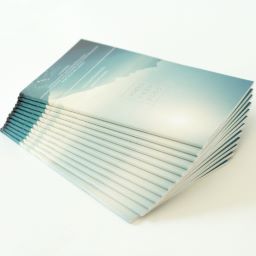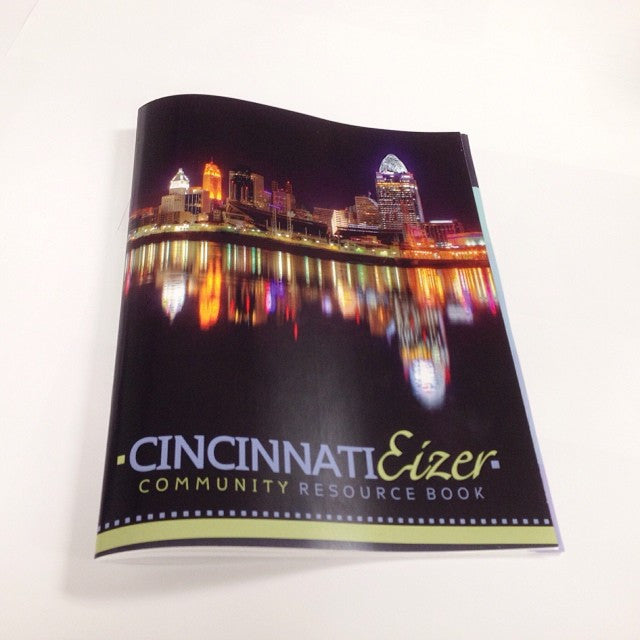The Vital Guide to Understanding Booklet Printing Options and Techniques
The process of booklet printing entails numerous considerations that can significantly influence the end product. From choosing the appropriate style and size to comprehending the nuances of binding techniques, each option plays an important role. Additionally, elements such as paper supply and printing methods additional influence the performance of the brochure. As one browses these alternatives, it becomes essential to grasp how they adjoin and what that indicates for the general outcome.
Understanding Booklet Sizes and layouts
When considering brochure printing, recognizing the numerous layouts and dimensions available is vital for accomplishing the desired discussion. Booklets can be generated in various formats, consisting of saddle-stitched, spiral-bound, and perfect-bound, each offering unique advantages. Common dimensions vary from basic letter (8.5 x 11 inches) to smaller choices like A5 (5.8 x 8.3 inches), enabling for flexibility based upon material and target audience.Selecting the appropriate dimension can affect both the design and visitor engagement. Bigger sizes might suit aesthetically driven material, while smaller formats may be much more portable and user-friendly. Furthermore, the number of pages influences the option of binding approach, as thicker booklets may need tougher bindings. Inevitably, recognizing these aspects enables for an extra customized technique, ensuring that the final item aligns with the desired message and visual, enhancing the overall performance of the interaction.
Picking the Right Paper Stock

Binding Approaches: Choices and Factors To Consider
When it comes to binding methods for brochures, numerous options are offered, each with distinctive benefits. Saddle stitch binding offers a cost-effective option for thinner pamphlets, while perfect binding methods supply a more sleek search for thicker publications. Wire-O binding stands out for its sturdiness and ease of use, making it suitable for records that call for adaptability.
Saddle Stitch Binding
Saddle stitch binding uses a useful and cost-efficient remedy for assembling brochures, making it a prominent selection amongst authors and businesses. This binding technique involves folding sheets of paper in fifty percent and stapling them along the fold line, creating a neat and orderly appearance. Usually appropriate for brochures with a lower page count, saddle sewing is ideal for magazines, sales brochures, and training products. The simplicity of this method enables for fast production and is commonly favored for brief runs or marketing things. Nonetheless, it is important to note that saddle stitch binding might not appropriate for thicker booklets, as the spinal column may not hold up under raised weight. On the whole, it stays a reliable option for several printing jobs.
Perfect Binding Techniques
Perfect binding is an extensively utilized method that provides a specialist and sleek coating to booklets and publications. This technique involves gluing the web pages together at the spine utilizing a strong adhesive, enabling a tidy edge and the capacity to hold a bigger variety of pages contrasted to saddle sewing. Perfect binding is especially ideal for thicker brochures, such as magazines and yearly reports, where a sturdy, level back is preferred. Furthermore, it uses the choice for a published cover that can be created to boost aesthetic charm. Considerations such as page matter, paper weight, and the intended use of the pamphlet ought to be taken right into account, as they can impact toughness and general top quality.
Wire-O Binding Alternatives
Wire-O binding, recognized for its sturdiness and versatility, offers an outstanding option for brochures that call for easy web page transforming and a specialist appearance. This binding technique employs a series of steel loops that hold pages securely, enabling them to lie flat when open. It is specifically appropriate for presentations, directories, and manuals as a result of its durable nature. Wire-O binding is available in various shades and sizes, suiting various web page counts and thicknesses. In addition, it allows the inclusion of covers and tabs, boosting the booklet's overall aesthetic. Factors to consider for Wire-O binding consist of the selection of wire color, the size of the loopholes, and the degree of personalization desired, every one of which can profoundly influence the final item's appearance and performance.
Digital vs. Offset Printing: Which Is Best for You?
When selecting a printing approach for pamphlets, recognizing the distinctions between digital and counter printing is necessary. Digital printing uses modern-day innovation to produce high-quality prints promptly and economically, making it perfect for brief runs or projects requiring fast turnaround times. It permits personalization, giving the capacity to print on-demand with marginal waste.In contrast, counter printing is a typical approach that stands out in producing huge quantities with regular quality. It includes moving ink from a plate to a rubber covering, then to the paper, which causes dynamic shades and exact information. Nonetheless, offset printing usually requires longer configuration times and is extra affordable for bigger volumes.Ultimately, the choice in between digital and balance out printing relies on task demands, budget plan, and preferred amount. For tiny, time-sensitive tasks, digital might be the very best selection, while offset may be better for bigger, top quality productions.

Creating Your Brochure: Tips and Finest Practices
When creating a brochure, careful attention to layout, typeface option, and shade use can greatly enhance its effectiveness. A well-structured format overviews the visitor's eye, while suitable fonts assure readability and share the wanted tone. Furthermore, effective use of shade can stimulate emotions and emphasize vital info, making the general layout extra impactful.
Selecting the Right Layout
How can one properly choose the right format for a pamphlet? First, it is vital to review the brochure's objective and target market. A clean, arranged design boosts readability and involvement. Utilizing a grid system can assist in lining up elements constantly, creating an expert look. Furthermore, integrating visual pecking order with varying sizes and placements of images and message can direct the viewers's eye and emphasize key info. It is additionally important to leave enough white space, which stops overcrowding and enables far better focus. Ultimately, testing different layouts via mock-ups can provide understanding right into how the style executes in real-world situations, ensuring that the final item fulfills both practical and visual requirements.
Selecting Appropriate Font Styles
A well-chosen font style can substantially enhance the overall design of a brochure, matching the design and strengthening the web content's message. The option of fonts should think about readability, especially for body message, as it guarantees the details comes to all visitors. Sans-serif typefaces are frequently chosen for electronic formats, while serif font styles can lend a standard feeling in published products. It's suggested to limit font choices to two or three to keep visual coherence. Additionally, font size plays an essential role; headings should be distinctive yet not frustrating, while body message need to be comfy for reading. When selecting fonts, positioning with the brochure's theme and target market is crucial for reliable interaction and visual appeal.
Efficient Use Shade
Color acts as an effective tool in brochure style, forming assumptions and directing visitor emotions. It can stimulate feelings of count on, peace, or excitement, relying on the tones picked. Developers should think about shade theory concepts, guaranteeing that the selected palette lines up with the booklet's message and target market. Using warm colors like red and orange can produce necessity, while cooler tones like environment-friendly and blue foster tranquility.Additionally, comparison plays a vital role; complementary colors can improve readability and visual charm. Uniformity in shade use throughout web pages better enhances brand name identification and communication. Inevitably, reliable shade execution not only records focus yet also reinforces the booklet's objective, making it an important element of successful design.
Completing Touches: Coatings and Special Effects
While numerous consider the content and layout of a booklet one of the most vital elements, the finishing touches, such as coatings and unique results, play a crucial role in enhancing its total allure. Coatings can supply security and sturdiness, guaranteeing that the booklet endures deterioration. Matte finishes provide a sophisticated, non-reflective surface, while shiny finishes can make colors show up even more dynamic a knockout post and appealing. Unique effects, like embossing or foil marking, include a responsive measurement that can develop a remarkable impact. These techniques can highlight details locations, attracting focus to vital details or creating aesthetic rate of interest. Additionally, UV coating can supply a high-shine finish that boosts the total look.Together, these ending up touches not just enhance the brochure's aesthetic however also communicate professionalism and focus to detail, eventually leaving a lasting influence on the reader.
Expense Considerations for Brochure Printing
Understanding the different price considerations for brochure printing is essential for organizations and organizations aiming to enhance their spending plans. Key aspects affecting costs include the selection of ink, binding, and paper approaches. Greater quality materials, such as superior paper or specialized inks, typically enhance the general expenditure. In addition, the size and web page matter of the booklet play a considerable duty; bigger brochures call for even more sources and time to produce.Another important consideration is the printing method, whether digital or balanced out, as each has its very own pricing structure and suitability for different quantities. Companies ought to likewise consider layout prices, which can differ based upon intricacy and using professional services. Ultimately, delivery and handling fees can contribute to the total, particularly for big orders. By assessing these elements, organizations can make informed decisions that align with their financial capacities while attaining the wanted high quality in their published products.
Often Asked Questions
What Are the Environmental Impacts of Pamphlet Printing?
The ecological influences of pamphlet printing consist of logging from paper production, carbon emissions from transportation, and waste generation from disposed of products - Booklet Printing. Lasting practices, such as using recycled paper and environment-friendly inks, can minimize these effects
Exactly How Can I Make Sure Color Precision in My Brochure?
To ensure shade accuracy in a pamphlet, one must use calibrated displays, utilize professional shade profiles, conduct examination prints, and choose premium printing services that supply color matching and proofing choices for finest results.
What Is the Typical Turn-around Time for Booklet Printing?
The typical visit this website turn-around time for booklet printing hop over to here differs relying on the complexity and amount - Booklet Printing. Typically, it varies from a couple of days to two weeks, affected by elements such as publishing techniques and ending up requirements
Are There Minimum Order Quantities for Booklet Printing?

Can I Publish Booklets in Multiple Languages?
Printing brochures in numerous languages is possible. Several printing solutions offer choices for multilingual or multilingual layouts, permitting effective interaction. Cautious preparation warranties that design elements fit various languages without compromising readability or looks. In addition, variables such as paper stock and printing methods more affect the efficiency of the pamphlet. When considering brochure printing, recognizing the numerous formats and dimensions offered is necessary for attaining the preferred discussion. When choosing a printing technique for booklets, recognizing the differences in between electronic and counter printing is essential. Additionally, the dimension and web page matter of the brochure play a significant role; larger brochures require more sources and time to produce.Another vital factor to consider is the printing method, whether digital or countered, as each has its own pricing framework and suitability for different amounts. The ecological effects of brochure printing include deforestation from paper manufacturing, carbon discharges from transportation, and waste generation from thrown out products.